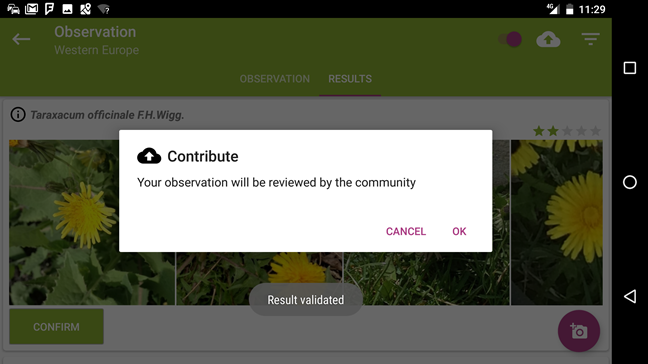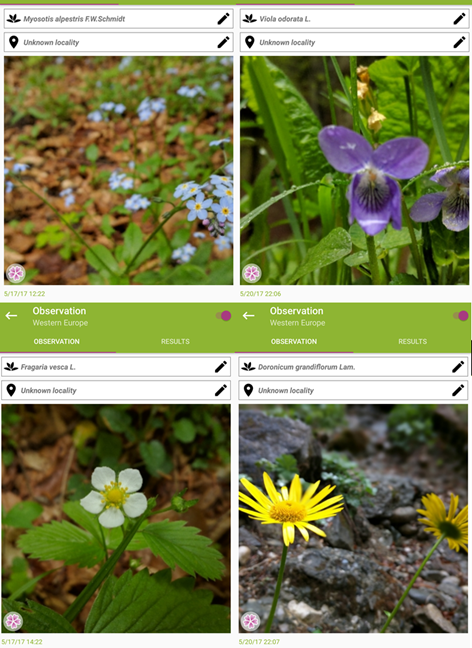
A while ago, we read about an app for Android called PlantNet, or PlantNet Plant Identification in its extended version. It's an app that promises to help people identify plants by using their smartphones. It's all about taking a picture and letting image recognition software do its job at identifying that flower, tree, or any other plant you've shot. People even compared PlantNet to Shazam and said that it is the new Shazam for plants. Whether that's true or not, you can imagine how eager we were to find out. So we used the app for a month or so, and now we'd like to tell you what it's all about and how it works. Of course, keep in mind that we are not botanists, so everything we talk about in this review is related only to the user experience we had with the app and nothing more:
What is the PlantNet Plant Identification Android App?
PlantNet Plant Identification otherwise known just as PlantNet is an Android app that describes itself as being "an image sharing and retrieval application for the identification of plants." The app is developed not by ordinary people, but by scientists from research organizations in France. It uses visual recognition software to help you identify plants from pictures you have in your Android smartphone's gallery, or by taking photos of a plant which you want to identify.
Each time you identify a plant using PlantNet, its database of plant species and images of them grows, and the more the database grows, the easier it is for others to successfully identify plants using the app.
PlantNet cannot help you identify plants that are not found in its database. It can only help you identify plants that have already been added to the database by others - researchers or people like you and me. It's an app that grows and shares knowledge through the collaboration of its users. You might be tempted to think that this app can identify most common plants, and you would be right but only if those plants are growing in certain parts of the world. For now, PlantNet can identify plants found in the following regions: Western Europe, Canada, United States of America, Caribs, Amazonia, Tropical Andes, North Africa, Reunion, Mauritius, Eastern Mediterranean, and Hawaii. Although the app's Play Store page states that it "doesn't allow the identification of ornamental plants," the truth is that the app can recognize some common ornamental plants such as those you have growing in pots in-house or in your back garden. You can download the app from its official Play Store page, which you can find here: PlantNet Plant Identification.
How does the PlantNet Plant Identification app work?
Working with PlantNet Plant Identification is very easy. Once you download and install the app on your Android smartphone, you will find it on your home screen or in your apps list. It's easy to recognize because it uses a green plant icon.
When you open PlantNet you're greeted by a screen on which you can choose what database of plants you want to use. It's preferable to choose the database that matches the region you live in or, if you want to identify plants that you grow in your garden or on your balcony, choose the Useful plants (Cultivated and ornamental plants). For each database of plants available the app tells you the number of plant species known and the total number of plants pictures.
Once you have chosen the database that you want to use, you can either go ahead and read the News - which are the latest plants added to the database, browse the database via the Explorer tab of the app, or add a new picture or plant using the Camera button that's found on the bottom right corner of the app. Note that after you add some plants, you'll find all of them listed in the My Observations tab.
PlantNet can identify plants from pictures found in your smartphone's gallery or from a photo you take directly with the app. Choose the method you prefer.
If you decide to use a picture from your gallery, skip this step and move on to the next one. If you choose to take a photo right now, PlantNet opens the camera and lets you shoot a photo. Make sure that the picture has a full leaf, flower, fruit or stem of the plant you want to identify. Also, if you can, try to take a photo of the plant with a simple background. Avoid multiple plants in the same photo. That's important because it makes the identification process easier and more reliable.
After you've chosen your subject plant and taken the picture, tap the OK button to use it with PlantNet.
Once PlantNet has a photo to work with, it will ask you whether it contains a Leaf, Flower, Fruit or the Stem of the plant you want to identify. Select the one that applies to your observation.
PlantNet then starts to look for plants from the database that match the photo you've used. When it identifies it correctly, the app shows you the result. And, if more results match the plant you've uploaded, you'll see them all listed one after the other. Either way, you will have to confirm the fact that the plant you've identified is one of the species from the list. This is one of the ways in which PlantNet manages to improve its databases and probably also the visual recognition software that sits at the core of the app.
Once you've confirmed the plant you were trying to identify, the app lets you know that "Your observation will be reviewed by the community."
NOTE: For all of the above to work you must have a working internet connection. Otherwise, the app cannot upload the photo(s) and download the matching results from the database.
Sometimes it can happen that you don't manage to find out what a certain plant is because either the app failed to find a match in the databases you used or because that specific plant has yet to be added by someone else. Even in such situations, all hope is not lost, as that plant is saved in your list of observations, to which you can come back later and re-check. Or, if you are a botanist or have the extensive botanical knowledge, you can manually add a new plant to the database and help others identify it in the future. 🙂
Working with the PlantNet Android app is easy and pretty straightforward. There are no complicated things to do, and the process of identifying or adding new plants to the databases is also fast and straightforward.
Does the PlantNet Plant Identification Android app work well?
We used the app on our smartphones for quite a while now, and we can share what our experience with it was. First of all, we must emphasize on the fact that we don't live in a region that's officially supported by any of the databases used by the PlantNet Plant Identification Android app. We live in Eastern Europe, namely Romania, and our country is not among the supported regions. However, we mainly used the Western Europe database, and we found it to match our region flora quite well. When we used the PlantNet app outdoors during park walks and mountain hikes, we tested it thoroughly, and we were able to get good results almost each time.
However, we cannot say the same thing about ornamental plants that we have in our balconies. The app does appear to be finding some matches for our ordinary plants and pot flowers, out of which we could mention Lavender, Dianthus, Calla Lilies or Ficus Microcarpa Ginseng. For instance, the Ficus plant was identified by PlantNet as being a Magnolia or American Boxwood, none of which were correct.
The PlantNet app works very well for plants that grow outside, in nature. Even if we don't live in a region that's officially supported, we were able to get excellent results, and we managed to identify many of the flowers and trees we checked. However, we can't say the same about ornamental plants and flowers, where the app failed to identify most of the species we tested.
Pros and cons
To sum all the positive things, the PlantNet app is worth using because:
- it helps you identify many plants that grow in many places around the world
- it can recognize ornamental plants, regardless of the world region you live in
- it's free
- it's collaborative, meaning that all its users help the databases grow each day
- it's very easy to use
- it's one of the best apps for learning botany in the wild, in the truest meaning of the word
What we don't like about PlantNet is the fact that it doesn't include databases for the plants that grow in Asia and most parts of Africa and South America. Other than that, there's not much not to like about this app.
Verdict
The PlantNet Plant Identification app is probably the best image recognition software for identifying plants. It works well, it's easy to use and easy to understand, and it produces good results, especially when you try to determine plants like trees or flowers that grow outside your home or garden. It's not that good for ornamental plants and flowers, but it probably will get better in time. It's a pity that there aren't plants databases available for all the regions of the world, and that may mean that PlantNet is not going to be interesting for people who live in Asia for instance, where there's no plant database available. However, if your region is supported or if you live close enough to an area that has a database, then the PlantNet app will make a great little addition to your Android smartphone. Whether you are a botanist or not, PlantNet is a must have for any plant lover and tree hugger out there.


















